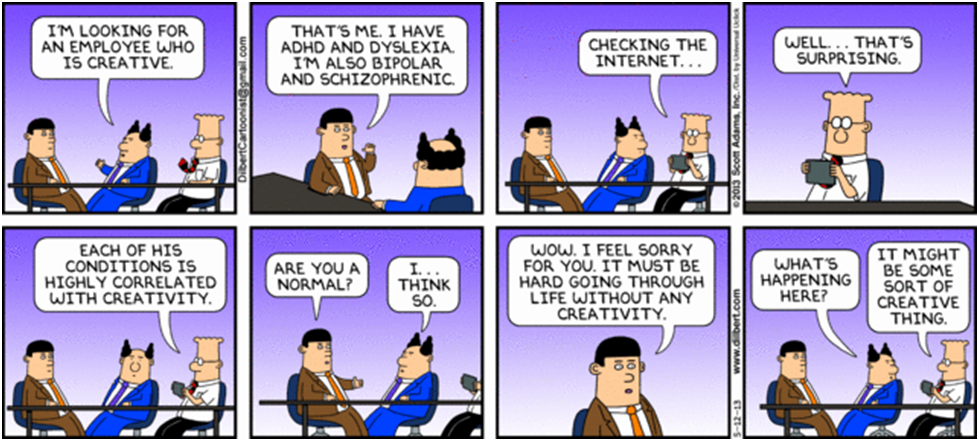It should come as no surprise that the hiring process around Dilbert’s office is as haphazard and questionable as everything else. This week, we’re checking in on Pointy Haired Boss (PHB) and Dilbert, as they interview an employee who is “creative.” But it’s not the kind of creativity they were looking for… is it? We’ll find out, and learn a bit about writing job descriptions, asking good interview questions, and maintaining control of the interview and hiring process. This is Decoding Dilbert.

This strip begins with PHB making a pretty broad statement about what he’s looking for in an employee. If you’ve read my previous articles, you’ll know that vague and broad statements are one of the biggest barriers to effective communication. This is definitely true during the hiring process.
One way that this vague statement could have been avoided is through the use of a good job description. Good interview questions stem from a clear understanding of what duties the candidate will be performing on a day-to-day basis. What kind of creativity does the job require?
PHB would have been much better off to describe an applicable job scenario that might require creativity. Or, if he still wants a more general question, he could have asked about the candidate’s creative accomplishments. Both types of questions are specific, applicable to the job, and allow for a unique answer from the candidate.
This job candidate responds to PHB’s vague question/statement with a completely off-the-wall answer. Note that the candidate’s answer would have been impossible with either of the suggested questions above. Without a clear job description, or concept of what kind of “creativity” they are looking for, Dilbert and PHB are completely bamboozled. A candidate’s admission of mental illness is a sensitive issue during a hiring process, but that’s a discussion for another day.
Dilbert and PHB should have tried to steer the creativity conversation in a more productive direction. What does Dilbert actually do? He pulls out his mobile device!
Dilbert uses his mobile device to look up the candidate’s off-topic answer, instead of moving back to talking about the job. Dilbert and PHB lose control of the interview at this point, evidenced by the fact that PHB is asking, by the end of the strip:
“What’s happening here?”
We know exactly what has happened there. Without a good job description, or interview agenda, Dilbert and PHB get distracted by the internet and railroaded into complete confusion by their job candidate. He even pities them by the end: “Wow, I feel sorry for you.”
He should feel sorry for them… but not because they’re “normal.”
What tips do you have for maintaining control of job interviews and the hiring process? What are your best “bad interview” stories? Share in the comments.
Decoding Dilbert: Part 1 | Part 2 | Part 3 | Part 4
IMAGE: Courtesy of Dilbert.com


